Last Updated on 3 years by On Trends Gear
The connections that are utilized to connect components are pretty meaningful. Designed speaker wire connectors that provide a secure connection with negligible signal loss are highly sought after by engineers.
In many situations and years, the only electrical connection utilized for speakers was a primary screw terminal with bare wires. This form of communication, although practical, is not very portable or secure.
Only a portion of the wire’s strands is often trapped beneath the screw, resulting in a weak mechanical & electrical connection.
This article will discuss what speakers are, why you need them in your connection, and how to connect your speakers using speaker wire.
Table of Contents
What are speaker wire connectors?
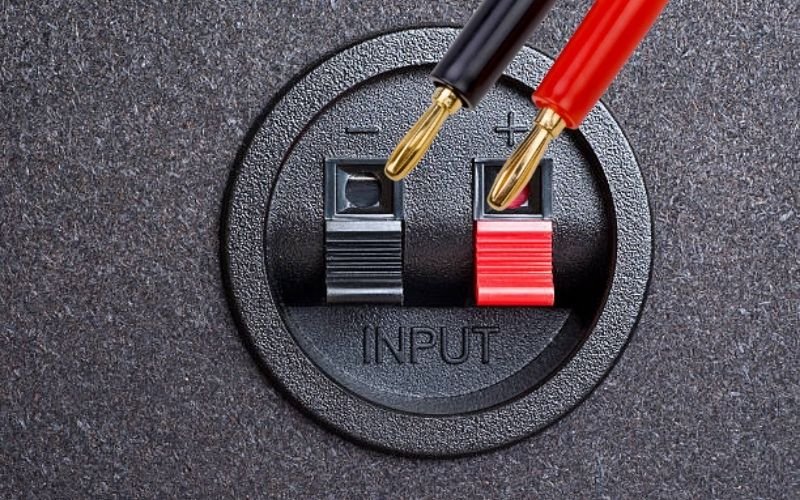
A speaker wire connector is a connector used to connect speaker wire to a speaker safely and securely.
All speaker wire connectors are designed to ensure that your speaker wire and your gear establish solid electrical contact with one another.
Additionally, they make connecting and disconnecting your equipment far more straightforward than using bare wire only.
Why do you need speaker connectors?
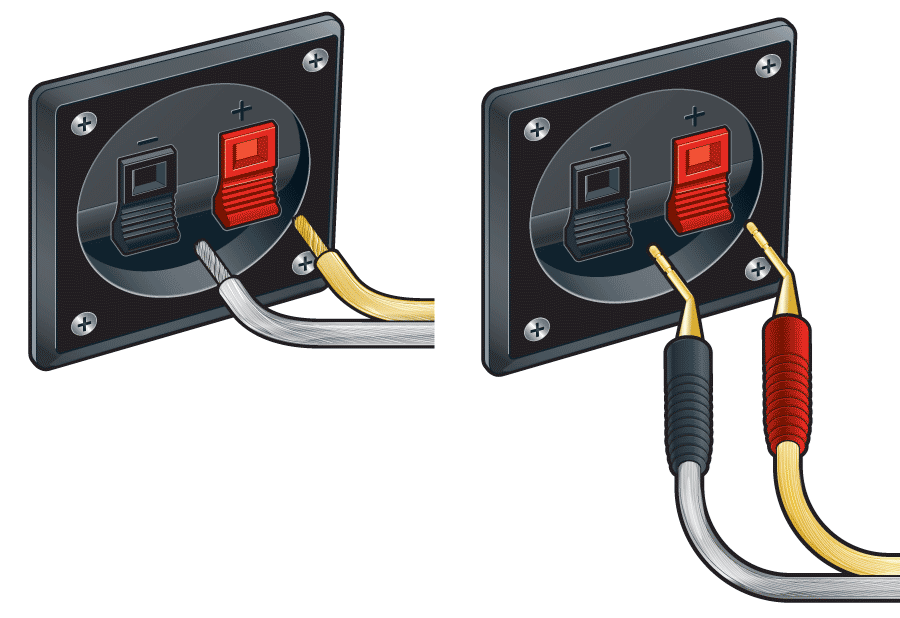
When it comes to speaker terminals and other home audio equipment, polarity is usually always indicated by colour-coding — the positive terminal (+) is red, and the negative terminal (-) is black — but this is not the case when it comes to speaker cables.
Not all speaker wire is constructed with two-tone insulating material or visible markings to facilitate easy recognition.
You can always test the speaker cables if you’re ever uncertain. You’ll never have to fret, second-guess, or examine again if you use coloured connectors.
Speaker wire connectors, particularly for those with multi-channel home entertainment systems, may save a lot of headaches. Speaker wire connectors, in addition to simplifying audio cables, aid in maintaining a secure connection.
The most powerful, possible sound will be produced by your stereo speakers as long as the tips are correctly placed and a high-quality signal is maintained.
And, as if all of this wasn’t enough of a cause to consider utilizing speaker wire connectors, they also contribute to the aesthetic of your equipment by making it seem cleaner, more organized, and much more elegant.
Type of speaker wire connectors
Wire connectors for speaker cables are available in three designs: banana plugs (a Dual-banana plug), spade connectors, and pin connectors. Banana plugs are the most often used form of wire connector.
Each one is straightforward to set up, needing just a few essential tools to do the job correctly.
First and foremost, you must examine the terminals accessible on your equipment to choose the most appropriate kind of wire.
Spade connectors
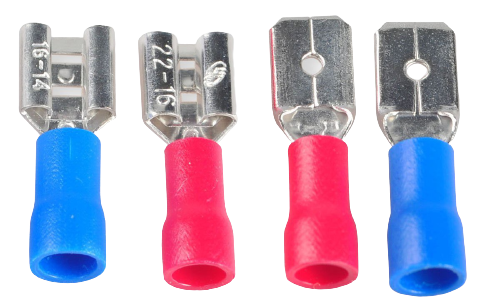
Spade connectors are made out of a forked piece of metal designed to fit snugly around the collar of a 5-way binding post connector.
After that, the spade is fastened by tightening the binding post’s cover on the binding post. Spade connectors are pretty reliable when it comes to making contact.
| Preview | Product | Rating | Price | |
|---|---|---|---|---|

|
Sopoby 220pcs Wire Spade Connectors, Heat... |
$27.99 |
VIEW ON AMAZON |
Banana plugs
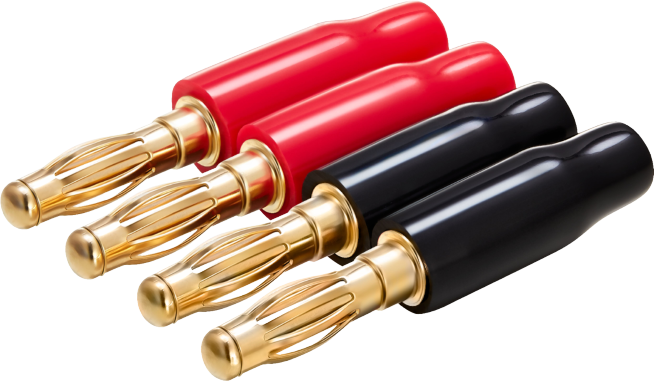
Banana plugs are an excellent option if your speakers and receiver have binding post terminals, which they almost always have.
In contrast to a binding post, a banana plug has a flexible metal collar that is slightly broader than the central hole. It collapses to fit when you put it in, giving a very firm connection between the two devices.
| Preview | Product | Rating | Price | |
|---|---|---|---|---|

|
FosPower Banana Plugs 12 Pairs / 24 pcs,... |
$34.99
$29.99 |
VIEW ON AMAZON |
Dual-banana plugs
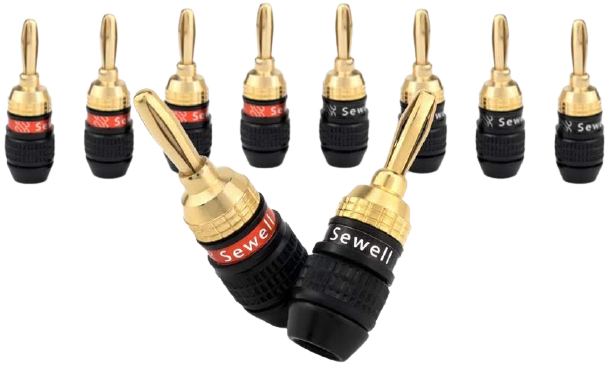
Dual banana plugs comprise positive and negative banana connections attached in a moulded housing spaced 3/4″ away from one another.
When used with 5-way binding posts, they are more convenient to connect than single banana plugs.
| Preview | Product | Rating | Price | |
|---|---|---|---|---|

|
Amazon Basics Speaker Banana Plugs (24 Pack)... |
$43.69 |
VIEW ON AMAZON |
Pin connectors
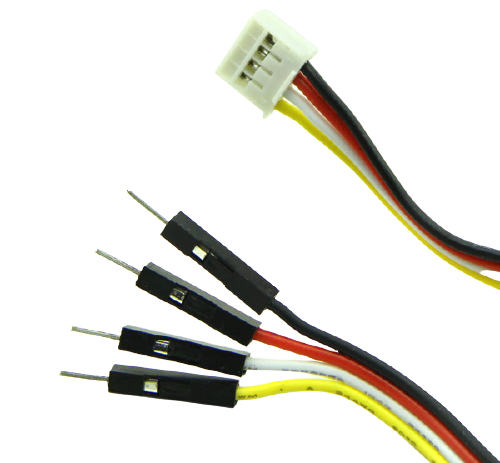
Straight pin connectors are more common than angled pin connectors. In addition to binding posts, they may be used with spring-clip speaker terminals.
| Preview | Product | Rating | Price | |
|---|---|---|---|---|

|
20 Sets Jst 2.0 Ph 4 Pin Connector Plug,... |
$7.59 |
VIEW ON AMAZON |
How to identify positive and negative on speaker wire?
To distinguish between a positive and negative speaker wire, look for the following indicators.
The Color-coding
When it comes to speaker cables, they are often colour-coded to make it easier to distinguish between the positive and the negative wires.
Most people use red and black colour coding, with red representing positive and black representing negative.
Listen attentively to your speaker sound
What is the sound quality like while you’re listening to music over your speakers? Sound disturbances, interference, or variable volume levels are all indications that the wires have become twisted and need to be corrected.
Check your speaker manual
Most times, speakers do come with an instruction manual on how to install them.
So, To verify that you attach the cables properly, go over the instruction booklet for your speakers.
Differences in physical or visual appearance

Look for discrepancies in the physical or visual characteristics of the two cables.
These different variances might assist you in distinguishing between the wires so that you can connect them appropriately.
Test with a multimeter
A multimeter or a 9-volt battery test may be used to determine the polarity of your speaker wires.
Using any of these tests, you can determine which wire is harmful and positive with pinpoint accuracy.
It is possible to guarantee that your speaker cables were fitted appropriately if you consider all of the elements listed above.
The optimum listening experience will be provided, allowing you to enjoy high-quality audio anytime you need it or want it to be available for you.
Which home device uses speaker wire connectors
Speaker wires are most typically bare, which means you’ll need to use a wire stripper to expose the strands at the ends of the wires before you can connect them.
Make sure you carefully twist the bare wire strands together so that they remain together as a tidy single twisted wire, regardless of whether your equipment employs spring clips or binding posts.
You may also buy speaker wire with its connectors, making connections more accessible and helping you determine polarity more quickly if the connectors are colour-coded.
In addition, if you don’t want to muck about with naked wires, you may install your connections yourself.
If you want to upgrade the tips of your speaker cables, you may purchase connectors separately.
One of the home sound devices that makes use of speaker wire connectors is the Home theatre.
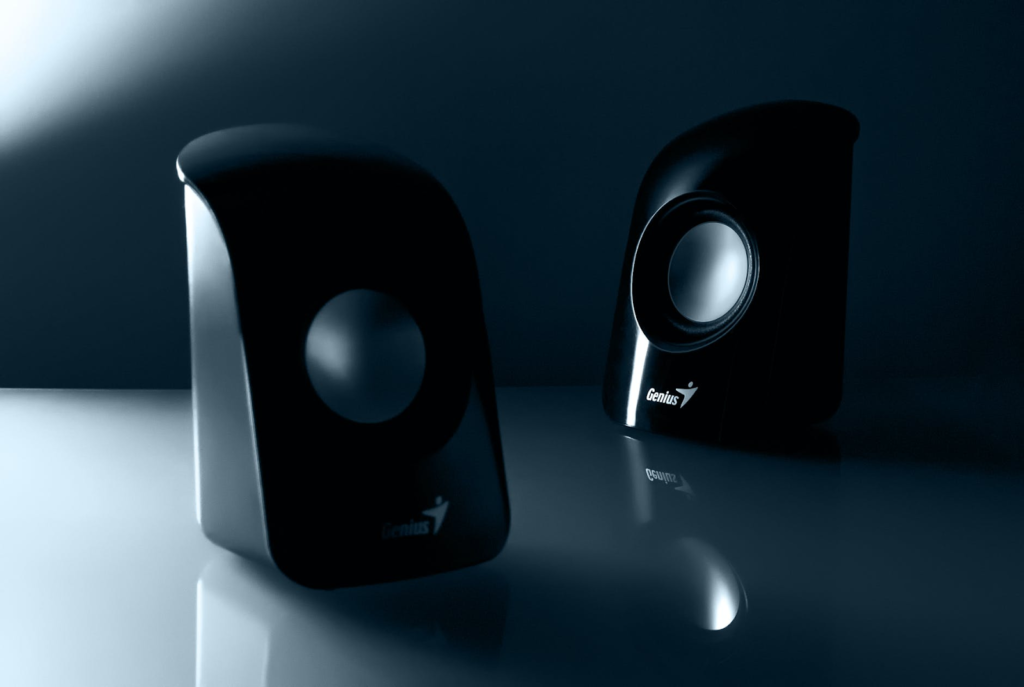
Home theatre is a set-up of audio and visual equipment in your home that simulates the experience of going to the movies.
Many tiny multiplex movie screens may not be able to compete with a strong home theatre system. Most home theatres make use of pin and banana plugs.
How Do I Connect My Speakers with Speaker Wire
Two different cables are used to create a speaker wire, and they must be linked to the positive and negative connections on the amplifier and speaker, respectively.
It doesn’t matter which way round they are connected when connecting the wires, even if the wires are labelled with a plus and a negative sign.
Simply ensure that the positive and negative terminals on the amplifier and speaker are connected with the same piece of wire.
Each speaker will have two positions. Positive and negative labels are visible. The positive side is usually coloured red, whereas the negative side is usually black.
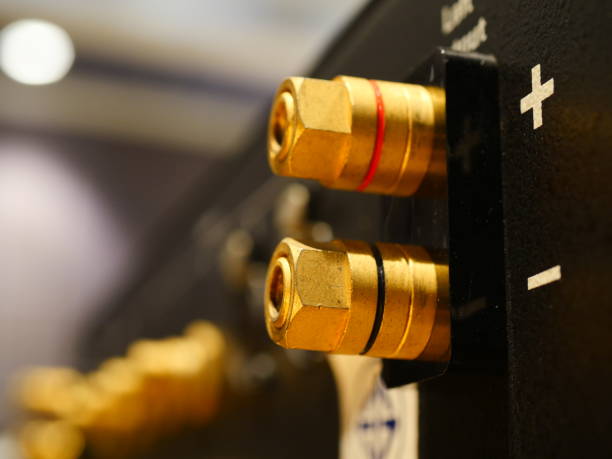
However, they are not usually colour-coded. For a single speaker output, connect one wire to both the positive and negative pins. The speaker will be connected to the opposite end of the cable.
It’s important to remember that the amplifier’s positive connection must be linked to the speaker’s positive connector. Negative connections are the same way.
Speaker Cable Connectors advantages and disadvantages
| Advantages | Disadvantages |
| They are equipped with a convenient locking feature, which means that there will be no more connection failures. | Pin plugs are brittle and will not provide the same level of durability as regular-sized plugs. |
| The most significant benefit of utilizing a connector is that it provides one of the best connection forms for speaker cables available on the market today. E.g., Spade plug | Banana plug is more costly to get, and If you have an extensive audio system, you may find that your cost is far more than it would be with alternative connections. |
| They also maintain all the strands within one secure connection and prevent the wire ends from unwinding. | As in the case of RCA connectors, each signal requires its plug to work |
| They are safe and provide you with a reliable connection for a long time. | Most connectors take a long time to screw and connect. E.g. spade plug |
Frequently Asked Questions About Speaker Wires
What is the color code for the speaker wires?
Speaker one: Red (positive), Black (negative), and Speaker two: White (positive), Green (negative) are the colour codes for the four-conductor cable.
It has to provide an electrical signal from the amplifier to the speakers (voltage and current) (or the amplifier portion of a receiver).
Is there a standard length for speaker wires?
It is also critical that the wire lengths connecting each speaker be the same to guarantee the same impedance values.
The cross-sectional area of the wire is a measurement of the wire’s thickness, which is measured in a gauge. The less resistance there is in a wire, the thicker the wire or, the smaller the gauge.
What materials can you use to make speaker wire?
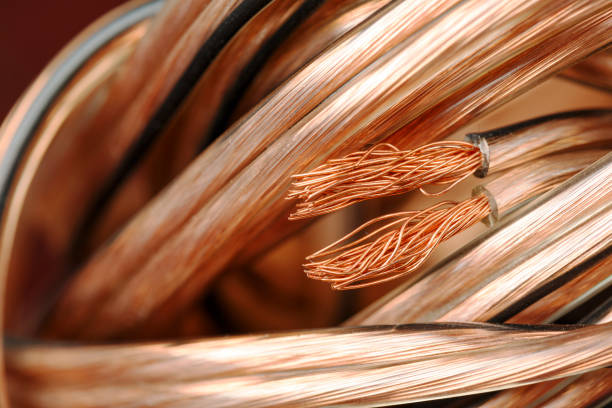
You are strongly advised to opt for the wire composed entirely of copper for the finest possible quality.
Although copper-plated or copper-clad aluminium wire is an excellent alternative, there is no discernible difference in sound quality between the two materials.
What is the best way to connect two wired speakers?
Series mode is used to connect the devices. Using the positive (red) connector on your amplifier, connect it to the positive input on one of your speakers.
To continue, connect the negative (not red) connector on your first speaker to the positive connection on your next speaker. Continue to connect your speakers in this manner until all of your speakers are linked.
Are the speakers at the front and back the same?
The rear surround speakers are made up of a pair of surround speakers, one on each side of the room.
The rear speakers are approximately the same size as the front speakers or somewhat smaller.
Like the front speakers, they are positioned to correspond to the right and left sides of the audience and are located directly behind them.
What is the best way to connect two speakers to a single output?
To begin, you should cut one wire to get it closer to one speaker. Then connect it in a series to the wire of the second speaker to complete the circuit.
After that, connect your speakers to the positive and negative terminals of the amplifier using the remaining wires. That’s all there is to it!
What is the best way to connect four speakers to a single amplifier?
To connect four pairs of high-definition speakers safely and conveniently, utilize a four-zone speaker selector switch.
To wire this up, just connect a cable from a central area (such as the living room) to each speaker, and you’re done!
To avoid overloading the amplifier, the box should also take care of any impedance matching issues.
Does it make a difference what sort of speaker wire you are using?
It is essential to consider how far the speakers are from your amplifier or A/V receiver when selecting which wire gauge to utilize.
In most cases, a 16-gauge speaker wire is suitable for short speaker wire lengths.
However, when running speaker wire over longer distances (such as to another room), it is preferable to utilize a thicker, lower-gauge wire.
What is the reason for the thinness of the speaker wire?
This cable is usually always relatively short and is located within the speaker cabinet.
Because the running length is so short, a thin cable will suffice to meet the low resistance criterion for efficient power/energy transmission.
Conclusion
Electrical currents are carried from your amplifier or receiver to your speakers through speaker cables.
The connection is a vital aspect of the audio setup, yet it is sometimes disregarded.
The appropriate speaker cable connectors are critical since it aids in the optimization of the audio signal until it reaches the final speaker components.
Signal loss may occur when you utilize the improper speaker cable type and connection, which can significantly impact the final sound. thanks for reading to the end,
you can also read; HDMI Arc; Can I use HDMI ARC as Regular HDMI? [Difference]
Last update on 2024-10-22 / Affiliate links / Images from Amazon Product Advertising API
Discover more from On Trend Gear
Subscribe to get the latest posts sent to your email.